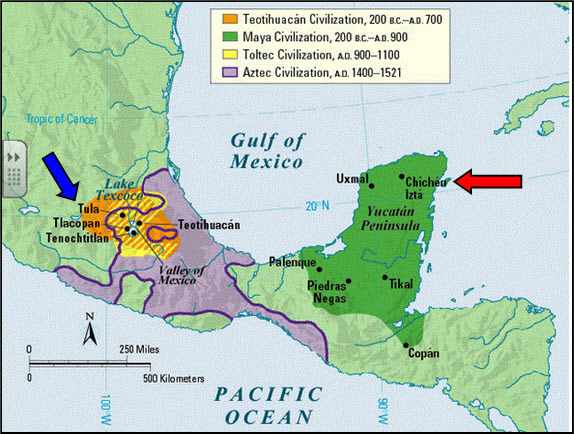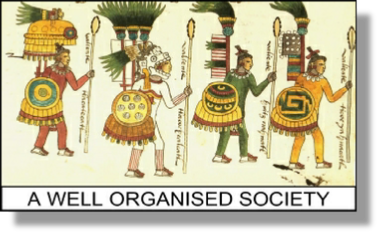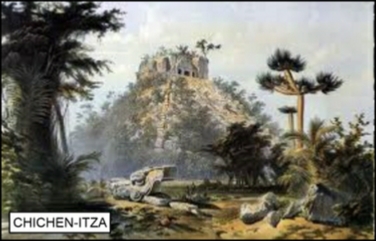


xxxxxThe Toltecs dominated much of today's Mexico from the tenth to the middle of the twelfth century. From their capital at Tula they established a network of trade routes across an empire which stretched as far south as Costa Rica. In 987 they expanded northward into Yucatan and, with the aid of the Itza, a Mayan people, set up another large state centred on the city of Chichen-
xxxxxThe Toltecs were an ancient people who dominated a vast area of Central America -

xxxxxThe warlike Toltecs probably came into the Valley of Mexico some time in the late seventh century. Having destroyed the ancient city of Teotihuacan, once the hub of a vast political and commercial empire, they set about establishing a network of trade routes, centred on Tula, (arrowed on map) which by the tenth century stretched out as far south as Costa Rica. In 987 it would seem, led by their King Quetzalcoatl, they expanded their empire into the northern area of Yucatan (south-
 xxxxxAt the height of the Empire's power, Tula, Chichen-
xxxxxAt the height of the Empire's power, Tula, Chichen-
x xxxxThe end of the empire came slowly and there is some doubt about the actual date of its demise, but it is generally thought to be about 1151. The gradual invasion of nomadic people from surrounding areas, starting about 1120, combined with serious famine over a number of years, brought revolution and a gradual breakdown of law and order. The newcomers had no kinship with or allegiance to the Toltec people and, indeed, some of them openly supported Cholula, a rival state to the south. However, the main invaders, it would seem, were the Chichimec, several tribes of nomadic Indians who invaded from the north and brought the tottering empire to its end. As we shall see, among these tribes were the Aztecs (see map above), and when they eventually came to power in this area in around 1325 (E2), the architecture of their capital city Tenochtitlan, founded in 1325, bore a striking similarity to that of Tula and Chichen-
xxxxThe end of the empire came slowly and there is some doubt about the actual date of its demise, but it is generally thought to be about 1151. The gradual invasion of nomadic people from surrounding areas, starting about 1120, combined with serious famine over a number of years, brought revolution and a gradual breakdown of law and order. The newcomers had no kinship with or allegiance to the Toltec people and, indeed, some of them openly supported Cholula, a rival state to the south. However, the main invaders, it would seem, were the Chichimec, several tribes of nomadic Indians who invaded from the north and brought the tottering empire to its end. As we shall see, among these tribes were the Aztecs (see map above), and when they eventually came to power in this area in around 1325 (E2), the architecture of their capital city Tenochtitlan, founded in 1325, bore a striking similarity to that of Tula and Chichen-
 xxxxxIncidentally, the breed of dog known as the Chihuahua, named after a Mexican state, might well be derived from the Techichi, a small mute dog kept by the Toltec people. It is not known why this particular dog was favoured by them, but the Toltecs did practise human and animal sacrifice and so the Techichi may well have been used in ritual ceremonies.
xxxxxIncidentally, the breed of dog known as the Chihuahua, named after a Mexican state, might well be derived from the Techichi, a small mute dog kept by the Toltec people. It is not known why this particular dog was favoured by them, but the Toltecs did practise human and animal sacrifice and so the Techichi may well have been used in ritual ceremonies.
THE END OF THE TOLTEC EMPIRE 1151 (ST)
ST-
Acknowledgements
Map (Toltec Empire): licensed under Creative Commons – althistory.wikia.com/wiki/Toltec+empire. Society: date and artist unknown. Chichen-


